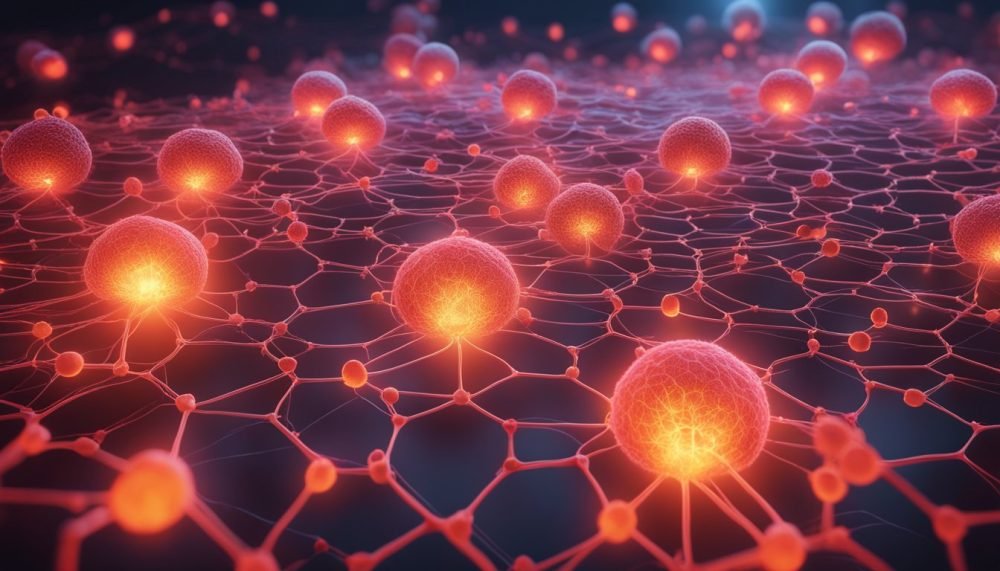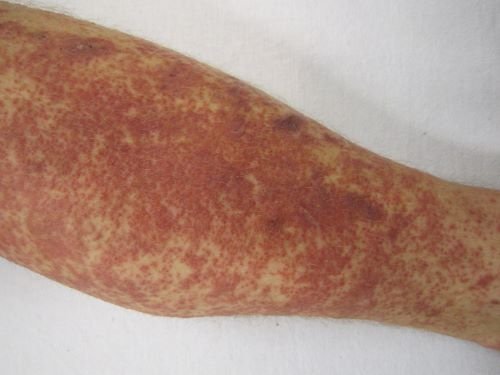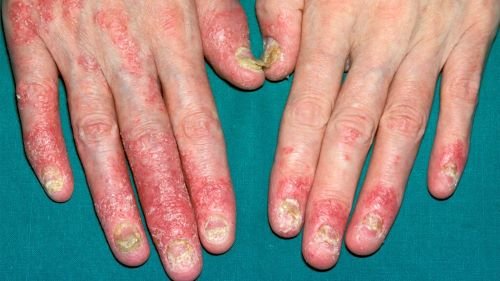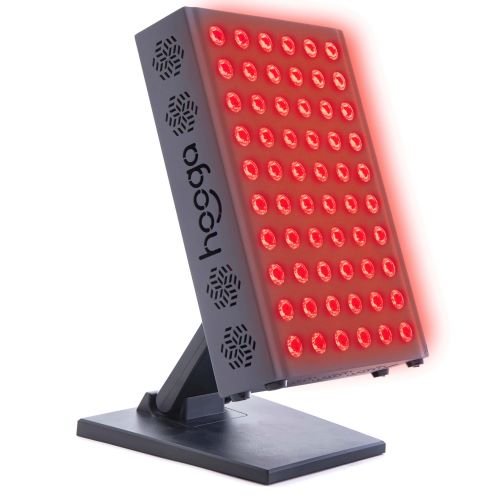Exploring the Benefits of Red Light Therapy for Autoimmune Diseases

Red light therapy is emerging as a potential treatment for autoimmune diseases, conditions where the immune system mistakenly attacks healthy cells in the body.
Examples of these include rheumatoid arthritis, lupus, and multiple sclerosis. As many people seek relief from symptoms, red light therapy provides a potential solution with minimal side effects.
Research studies and personal experiences suggest that red light therapy may improve quality of life for individuals living with autoimmune diseases.
In this article, we’re going to take a deep dive on understanding Red Light Therapy and its mechanisms of actions, summarize what the scientific community has to say about RLT and Autoimmune Diseases and have a look at some personal experiences with RLT.
Key Takeaways
- Red light therapy is being explored as a treatment for autoimmune diseases.
- It works by using red and near-infrared light to potentially stimulate healing at the cellular level.
- Ongoing research and user reports suggest health benefits and symptom relief for individuals with autoimmune conditions.
Defining Autoimmune Diseases and Examples

First things first. Let’s define what auto-immune diseases are.
According to Britannica Encyclopedia:
Autoimmunity, is the state in which the immune system reacts against the body’s own normal components, producing disease or functional changes
There are over 80 different types of autoimmune diseases, including rheumatoid arthritis, lupus, multiple sclerosis, type 1 diabetes, and celiac disease, among others.
The exact cause of autoimmune diseases is not fully understood, but it is believed to involve a combination of genetic, environmental, and hormonal factors.
Autoimmune diseases can affect people of all ages and genders, and they often have chronic and fluctuating courses.
The Immune System’s Role in Health and Disease
The immune system is a complex network of cells, tissues, and organs that work together to defend the body against harmful pathogens, such as bacteria, viruses, parasites and abnormal cells.
It acts as a surveillance system, constantly monitoring the body for any signs of infection or disease. When it senses these invaders, it sends out an army of fighter cells ( white blood cells, antibodies, lymph nodes)- to attack them.
In some cases, the immune system may become overactive or dysfunctional, leading to autoimmune disorders, where the immune system mistakenly attacks healthy cells and tissues (like your joints or skin).
On the other hand, a weakened immune system can make individuals more susceptible to infections and diseases.
Common Types of Autoimmune Diseases
Several autoimmune diseases affect millions worldwide.
For example,
- Rheumatoid Arthritis causes painful swelling in the joints.
- Multiple Sclerosis involves the immune system attacking the nervous system, affecting the brain and spinal cord.
- Type 1 Diabetes happens when the immune system attacks insulin-producing cells in the pancreas.
- Lupus causes the immune system to attack tissues throughout the body.
- Inflammatory Bowel Disease (IBD), which includes Crohn’s Disease and Ulcerative Colitis, affects the digestive tract.
Here are a few more autoimmune diseases and their targeted areas:
- Psoriasis – Skin
- Hashimoto’s Thyroiditis – Thyroid gland
- Celiac Disease – Small intestine (reaction to gluten)
- Sjögren’s Syndrome – Glands that produce tears and saliva
- Vasculitis – Blood vessels
- Ankylosing Spondylitis and Psoriatic Arthritis – Joints and sometimes eyes, bowel, and skin
- Myasthenia Gravis – Nerve and muscle junctions
Challenges in Managing Autoimmune Diseases
Managing autoimmune diseases typically involves dealing with chronic inflammation and the need to balance treatment options with potential side effects.
People with autoimmune diseases often experience fatigue, a significant impact on quality of life, and may have limited treatment options.
Medical professionals may suggest Complementary and Alternative Medicine (CAM) approaches alongside conventional treatments to manage symptoms and improve overall well-being.
Understanding Red Light Therapy And How It Works

This section will cover the basic principles of Red Light Therapy (RLT) and how it’s applied in the context of autoimmune diseases and other health conditions. You will learn about the science backing this technology, the variety of devices available, its specific benefits for autoimmune conditions, and additional health benefits.
How Red Light Therapy Works
Red Light Therapy, also known as Low-Level Laser Therapy (LLLT) or photobiomodulation, works by emitting red or near-infrared light which can penetrate the skin and be absorbed by cells.
This absorption stimulates the mitochondria, the powerhouse of the cell, leading to an increase in the production of adenosine triphosphate (ATP).
The enhanced generation of ATP boosts cellular energy, supporting various functions crucial for health and healing.
RLT also influences the release of nitric oxide, a compound that promotes blood flow and has anti-inflammatory effects.
What are the different types of RLT devices and Applications
Red Light Therapy devices come in numerous forms including panels, pads, and lasers. Each has its own specific advantages and applications depending on the issue being addressed.
- Panels: Suitable for treating large areas, like the back or chest.
- Pads: Flexible and can be wrapped around joints or limbs.
- Lasers: Provide precise treatment, often used for targeted areas.
These devices differ in terms of dose, which is determined by the duration of application and irradiance (the intensity of light emitted).
What are the potential RLT Benefits for Autoimmune Diseases
In autoimmune diseases, where the body’s immune system attacks healthy tissues, RLT has been reported to help reduce inflammation—a key symptom of autoimmunity.
Clinical trials, including randomized controlled trials (RCTs), have begun to examine RLT’s potential to alleviate symptoms like joint pain and improve quality of life for these patients.
- Inflammation Reduction: Potential to decrease the inflammatory response.
- Pain Management: May reduce joint and muscle soreness associated with autoimmune conditions.
Other Potential RLT Benefits
Beyond autoimmune diseases, Red Light Therapy is used for a range of health issues. It might aid in improving skin health, accelerating wound healing, reducing muscle soreness, and contributing to better sleep patterns and mental health.
- Skin Health: Can improve texture and support healing.
- Muscle Soreness: Helps in reducing post-exercise discomfort.
- Wound Healing: Supports the body’s natural recovery processes.
- Cognitive Function: May improve brain health and function.
Furthermore, benefits of RLT for quality of life improvements are being investigated, with some indications that it might help with sleep and overall mental wellbeing.
What Research Says on RLT and Autoimmune Diseases

Red light therapy (RLT) is being investigated as a potential treatment for autoimmune diseases. In this section I’ll summarize some of the most important scientific findings on RLT and autoimmune diseases.
- A 2013 peer-reviewed article published in PLOS ONE studied the effects of 670 nm light therapy on a mouse model of multiple sclerosis (MS). They found that this therapy reduced nitrosative stress and apoptosis in the central nervous system, which contributed to the therapy’s effectiveness in improving the disease symptoms. This suggests that 670 nm light therapy could be a potential treatment for MS by targeting these underlying mechanisms.
- A 2016 review published in Frontiers in Neuroscience suggests that red to infrared light therapy, particularly in the near infrared range, may be a promising treatment for Alzheimer’s and Parkinson’s diseases. This therapy has shown success in protecting neurons from damage caused by various stressors like hypoxia, toxins, genetic mutations, and mitochondrial dysfunction. Using near infrared light could potentially slow down or stop the progression of neuronal death in these neurodegenerative disorders.
- A 2014 randomized controlled trial published in Lasers in Medical Science investigated the effects of low-level laser therapy (LLLT) on fibromyalgia symptoms. They treated one group with LLLT and another with a placebo. Both groups showed fewer tender points after treatment, but only the LLLT group had significant improvements in overall fibromyalgia symptoms, including pain, impact on daily life, and severity.
- A 2013 article published in the same journal (Lasers in Medical Science) investigated the effects of low-level laser therapy (LLLT) on rheumatoid arthritis (RA) in rats. They induced RA in rats and treated them with LLLT at different stages of the disease. The study found that LLLT significantly reduced inflammation in the joints, improved tissue damage, and promoted healing in both early and late stages of RA.
- A 2018 study published in the International Journal of Endocrinology followed up on a randomized clinical trial (RCT) that investigated the effects of low-level laser therapy (LLLT) on hypothyroidism caused by chronic autoimmune thyroiditis (CAT). Six years after the initial trial, participants who received LLLT showed fewer thyroid nodules and required less medication compared to those who received a placebo.
- A 2010 study published in the journal, Lasers in Surgery and Medicine, explored the use of low-level laser therapy (LLLT) for patients with hypothyroidism caused by chronic autoimmune thyroiditis (CAT). After receiving LLLT, patients needed less medication and showed improved thyroid function. Additionally, levels of thyroid antibodies decreased, indicating a positive effect on autoimmune activity.
- A 2019 review published in Current Allergy and Asthma Reports discusses low-level laser therapy (LLLT) as a potential treatment for inflammatory diseases. It concluded that LLLT shows promise in treating skin and joint conditions due to its anti-inflammatory properties and ability to promote tissue repair. Unlike traditional treatments with side effects, LLLT is non-invasive and has minimal side effects.
Personal Experiences with Red Light Therapy
People using red light therapy for autoimmune conditions report a variety of outcomes. Many highlight its effectiveness in alleviating physical discomfort. For instance:
- A person shared their experience on the Enlighten Red Light Center blog. They stumbled upon Red Light Therapy while navigating their own health maze. They found that RLT might help calm an overactive immune response, encourage cellular repair, and reduce inflammation, which is a big deal when dealing with an autoimmune condition.
- On MyLupusTeam, a few members shared their personal experiences with red light therapy. One member mentioned that while it did not stop their hair from falling out or make the discoid rash on their scalp go away, it did help with body aches, joint pain, and stiffness.
- A user on Grasping for Objectivity blog shared their personal experience with RLT. They described the therapy as something that changed their life.
| Benefit | Description |
|---|---|
| Pain relief | Less joint pain and stiffness. |
| Decreased inflammation | General reduction in inflammatory symptoms. |
| Immune system modulation | Helping to balance immune response. |
| Improved cellular health | Encouragement of cellular repair processes. |
| Potential decrease in medication | Some reported reduction in dependence on medications. |
These individual testimonials suggest that while results vary and therapy might not address all symptoms, for some, red light therapy is a valuable part of managing their autoimmune disease.
Risks and Contraindications Related to Red Light Therapy?
While RLT is considered safe for most people, it is important to be aware of possible risks and contraindications.
Side effects from RLT are typically mild and may include temporary skin redness. However, RLT should be used with caution in individuals with certain medical conditions or sensitivities.
Contraindications can include skin cancer or a history of photosensitivity disorders.
As with any treatment, it is essential to consult with a healthcare provider before starting RLT, especially for individuals with autoimmune diseases.
Bottom Line
As it seems, the research and personal experiences suggests that red light therapy is promising in fighting several autoimmune diseases – mainly related to skin.
As mentioned earlier in this post, there are approximately 80 different autoimmune diseases and RLT might not be suitable for each one.
But, I believe it is wise to bring RLT “on the table” when talking with your personal doctor as a non-invasive and drug free approach to combating your autoimmune.
Read Next






